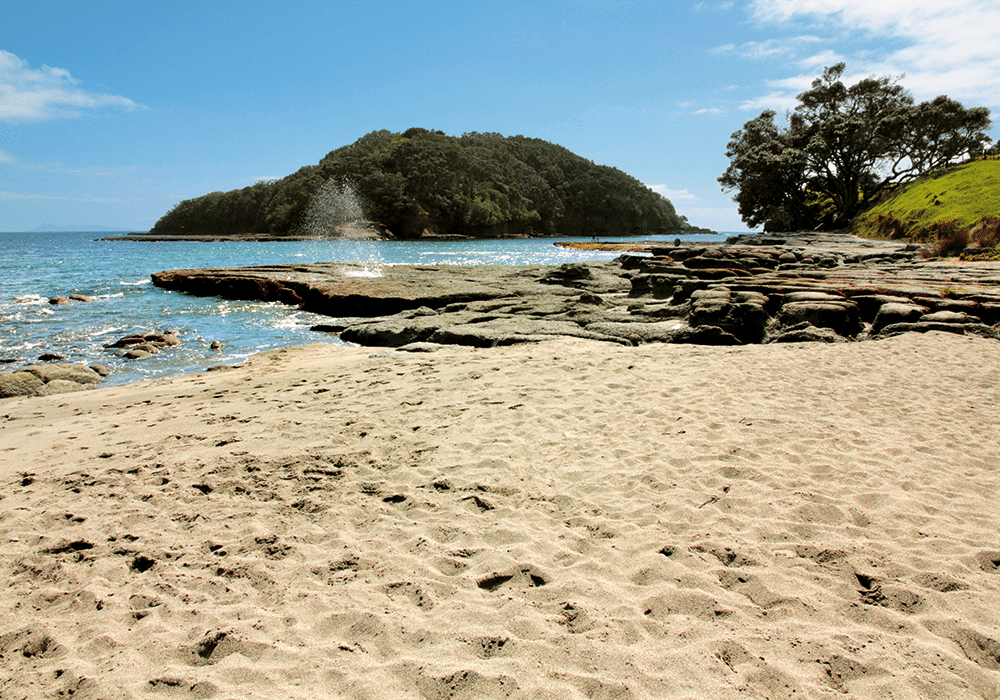Few North Island driving routes offer as many diversions as that from Warkworth to Leigh. As Jill Malcolm discovers, four days is barely long enough.
Day one
On the way from Warkworth to Sandspit on the Mahurangi Peninsula, we lunched at the Parsley Pot, a little countryside cafe worth enthusing over. The shed-shaped building is set in a leafy cottage garden. I walked up the steps and nearly tripped over a large dog squatting peacefully beside his water bowl. On the verandah a family had gathered. Their bursts of laughter and the hum of cheerful activity in the cafe kitchen added to the sociable mood.
From there, a steeply descending road ends in the finger of land that protrudes into the Matakana River mouth. The hazy blue sky was reflected in the glassy sea of Kawau Harbour. It was a peaceful afternoon, silent but for the piping call of waders feeding on the mudflats, and the faint engine-throb of the ferry making its way to Kawau Island.
We stayed in the Sandspit Holiday Park, on the harbour’s edge. There are not many powered sites, as the park is mostly inhabited by a clutter of cabins, permanent caravans and stored launches, but it was winter and we scored a lovely spot under a canopy of mature trees.
Day two
Spark Road off Sandspit Road leads through attractive farmland to connect with the route to Matakana. Even though it was mid-morning we called into Charlie’s Gelato Garden with its licks and promises, set up by Charlie Wrigglesworth, who had copied the gelateria artiginale (artisan ice cream) he’d seen in Italy. To say we were spoiled for choice was an understatement. I tasted plum, rockmelon and pineapple sorbets, and among the 30 flavours of gelato were stracciatella, limone, peanut butter and pistachio. They melted my resolve to slim and I chose a pottle of affogato for the motorhome freezer, which was probably the most fattening of the lot.
Also on Spark Road is the entrance to Heron’s Flight cellar door. Between Warkworth and Matakana, vines are now combed across many of the hillsides, and among them, elegant winery buildings housing popular but expensive restaurants. My favourite is the small boutique winery, Hyperion, but it wasn’t open in the winter.
It was Saturday and traffic was pouring down the road to Matakana for the farmer’s market. The normally peaceful little town was overwhelmed with visitors. Finding a park was no fun, and I felt I’d run a marathon by the time we got to the venue. People were shuffling around shoulder to shoulder, grazing on pork pies, dumplings, mussel fritters and lemon frappes, buying breads and spicy sauces, chatting about the wonders of good food and listening to the musicians who liven up the mood from the banks of the Matakana River.
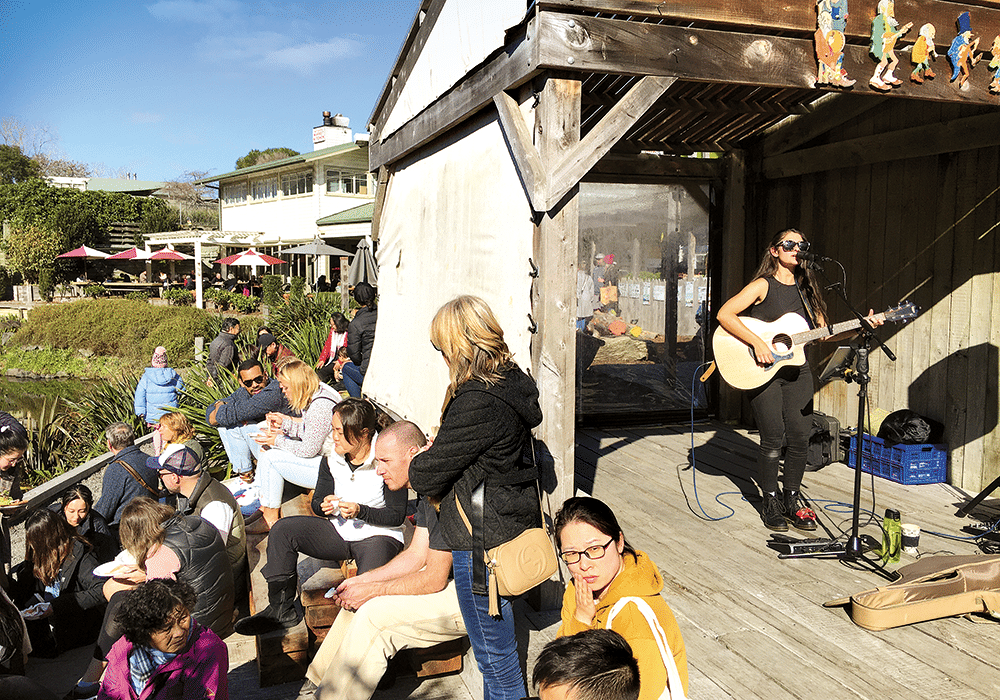
Cashing in on the crowds have come satellite markets, cafes and bars. A local woman and I were standing on the curb trying to find a gap in the traffic to cross the road. “This is crazy,” she said. “It used to be so quiet here.”
Hungry and coffee-crazed but not wanting to join the madding crowd, we went to Plume Cafe across the road, set in a charming colonial house overlooking the Matakana River. A fire crackled in the large stone fireplace and just outside the back door, the purpose-built bakery sold breads and pastries.
If it had been summer we would have repeated the experience we once had, gliding down the pea-green river to Sandspit on a purpose-built boat modelled on an oyster barge. James Goenhart, who now runs the river tours, has added canoeing options, and also offers tours to the oyster beds in Brownes Bay, in the Mahurangi Harbour. The boat leaves all seasons from Scotts Landing, and you can eat as many of the delicacies as you can shuck. They are not the prettiest of bivalves, but to a shellfish gourmand like myself, the presence of thousands (maybe millions) of those distorted, slate-coloured shells was a wonderful sight. Being out on the water of that lovely harbour is a great experience for anyone. For an oyster lover, it’s seventh heaven. If there is no time for a deviation for the oyster tour, you can buy them at the roadside Oyster Shack. It’s just north of the Whangateau Holiday Park, on the edge of the tidal harbour where we stayed the night.
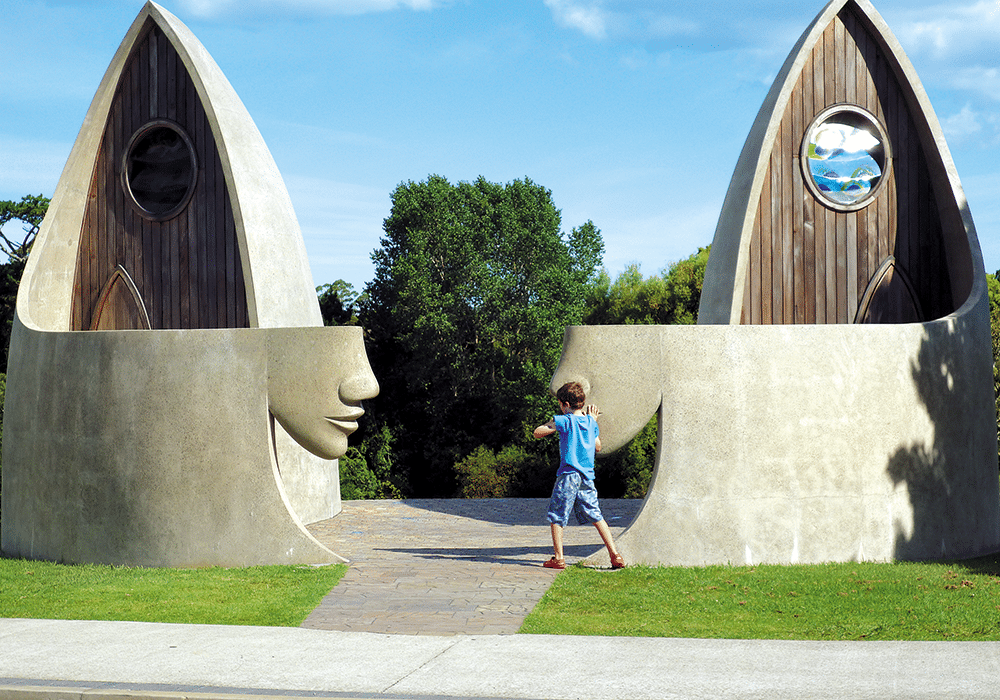
Day three
We woke to a leaden sky, and waterside activities went on hold. Turning back towards Matakana, we revisited the Morris and James Pottery. In 1970, Ant Morris and Sue James set up their kilns to create their handsome tiles and beautifully proportioned terracotta pots. With a bit of ‘pot luck’, their enterprise became a resounding success. People still flock there to admire the expansive range of vibrantly glazed urns, tiles and bowls.
Close by is the turnoff to one of Matakana’s more recent attractions – Sculptureum. This exceptional art exhibition, covering 25 hectares of land, comprises several indoor galleries and enclosed outdoor gardens, designed to display around 750 singular artworks and objects. Anthony Grant, an ebullient barrister who, with his wife Sandra, is the author (and funder) of this astonishing showcase, wanted to know what I thought. Caught on the hop, I slipped into platitudes. Sculptureum is worthy of so much more.
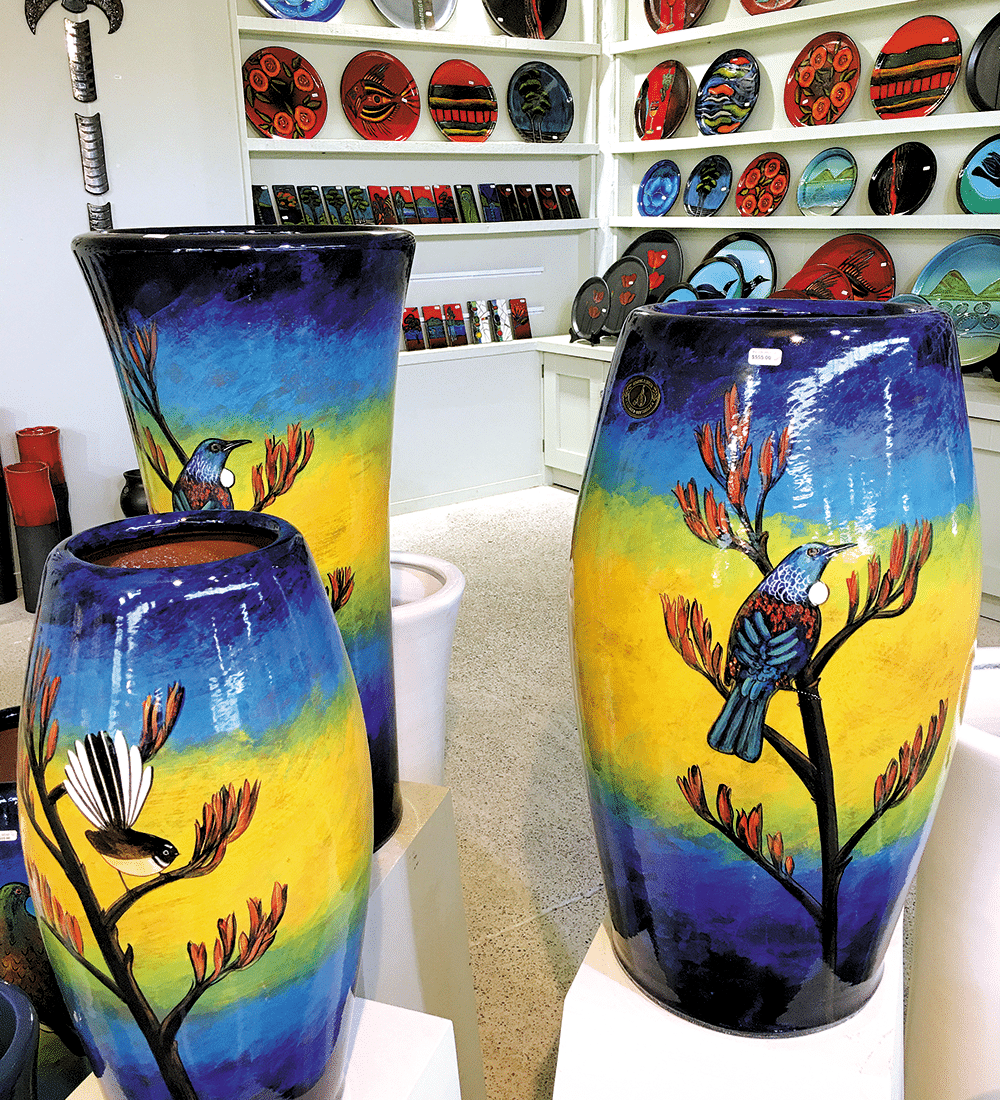
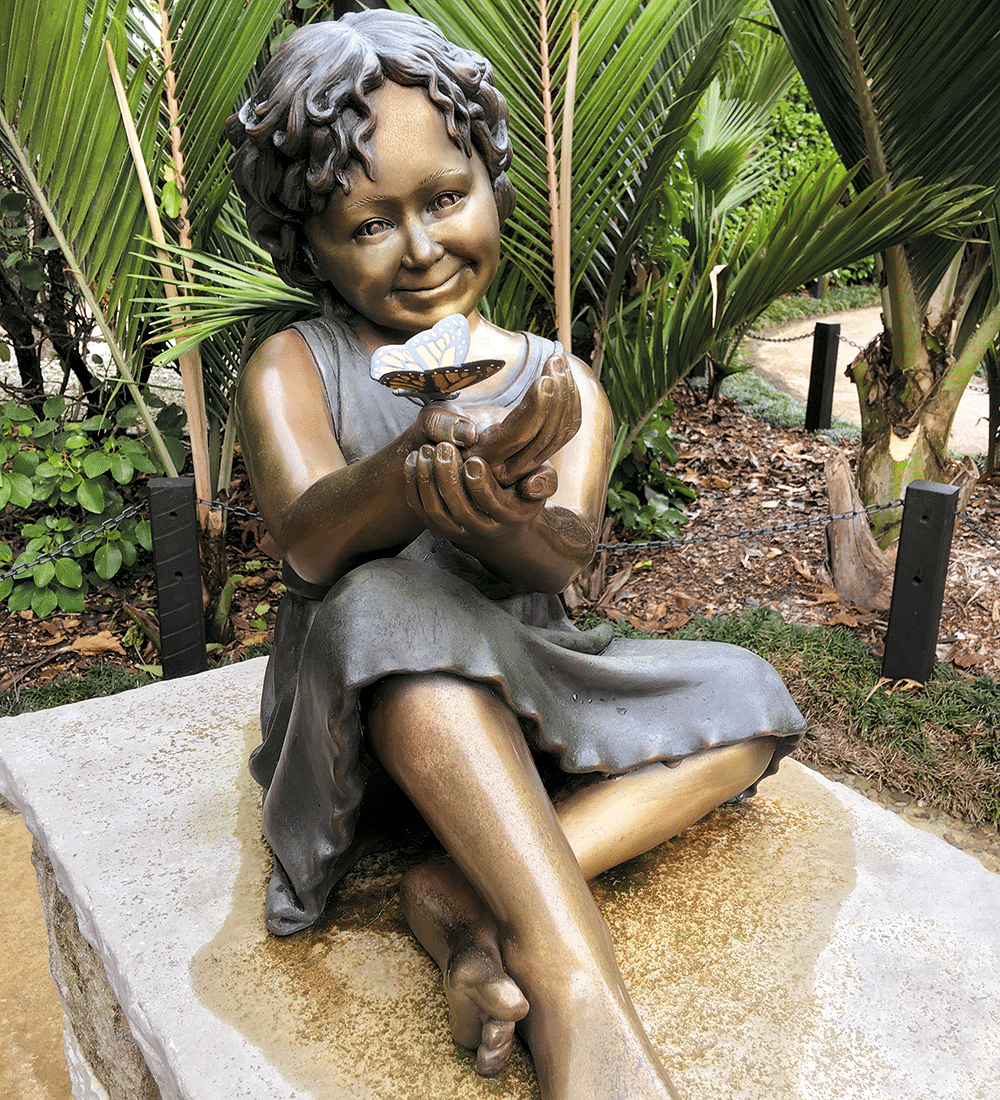
Further along Leigh Road we pulled into the parking area of the Sawmill Brewery and were enveloped in the warm sweet smell of malted wheat. The building opens up to the towering vats of the brewery’s working parts, and although the area is fronted by a tap bar for visitors, there was no attempt to disguise the fact that we were walking into a commercial factory. To one side is the rustic-looking Smoko Room, a cosily cushioned space that has a refreshingly interesting menu. People come for the food, but it’s naturally the beer that is the mainstay. We each had a glass of crisp clear Pale Ale before we drove on.
It’s a pleasantly winding route from there to the turnoff to Mathesons Bay, a delightful horseshoe-shaped indentation on the coastline with a sandy beach, a large grassy area, shady pōhutukawa trees and safe swimming. It’s one of my favourite places along this coast. Sadly there is no overnight parking. There is, however, a very neat, pleasant campground in the village of Leigh, where we spent our third night. Leigh perches on a cliff above the harbour. With good reason, the first road on the right is called Wonderview, from which there is a sharp view of the peaks and folds of Little Barrier Island. We bought fish (locally caught) and chips, and walked down to Leigh’s postcard-picturesque, commercial fishing harbour to consume them, surrounded by begging seagulls. We could have dined at the memorabilia-strewn Sawmill Cafe, but the sound of the sea seemed a better option. The rustic cafe is noted for its wood-fired pizzas and musical gigs. In the adjacent building, which once housed a brewery, is an interesting collectables shop.

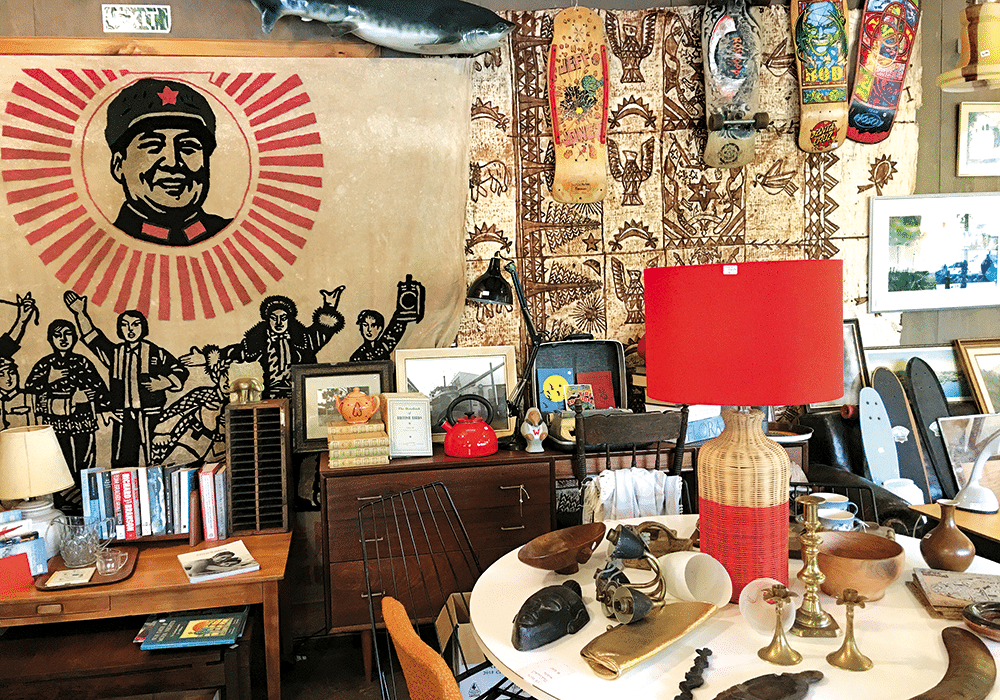
Day four
Early morning is a good time to visit Goat Island Marine Reserve, a short drive from Leigh. It is one of the great successes of wildlife preservation in New Zealand, the first marine park in the country and a blueprint for saving at least some of the fish in the sea. Thousands of people visit every year to snorkel, dive, kayak or view from a glass-bottom boat the thousands of mau mau, moki, snapper, blue cod and striped parore that swirl through the water around the island. We had to be content with a walk over the rocks, as all operations, including the impressive Marine Discovery Centre, were closed in winter.
Just off the road back towards Matakana and open all year is the Ti Point Reptile Park, the only dedicated reptile park in the country. It houses hundreds of land tortoises and terrapins, skinks, geckos, alligators, tuatara and, in the larder, a lot of insects to feed them. A group of itsy-bitsy baby tortoises stole my heart, as did the giant geckos from Madagascar and the large pastel-coloured iguanas from South America. The leopard geckos are refugees from Afghanistan, the bearded dragons from Australia and the alligators from Florida.
Two critters I did not spontaneously admire were the resident tarantulas – the Red Kneed and the Chilean Rose. I’m an arachnophobe, but as long as I didn’t have to hold them I could appreciate the soft-toy look of their furry bodies and sprouting legs. Apparently, they are docile creatures. Frankly, I would rather stroke an alligator.
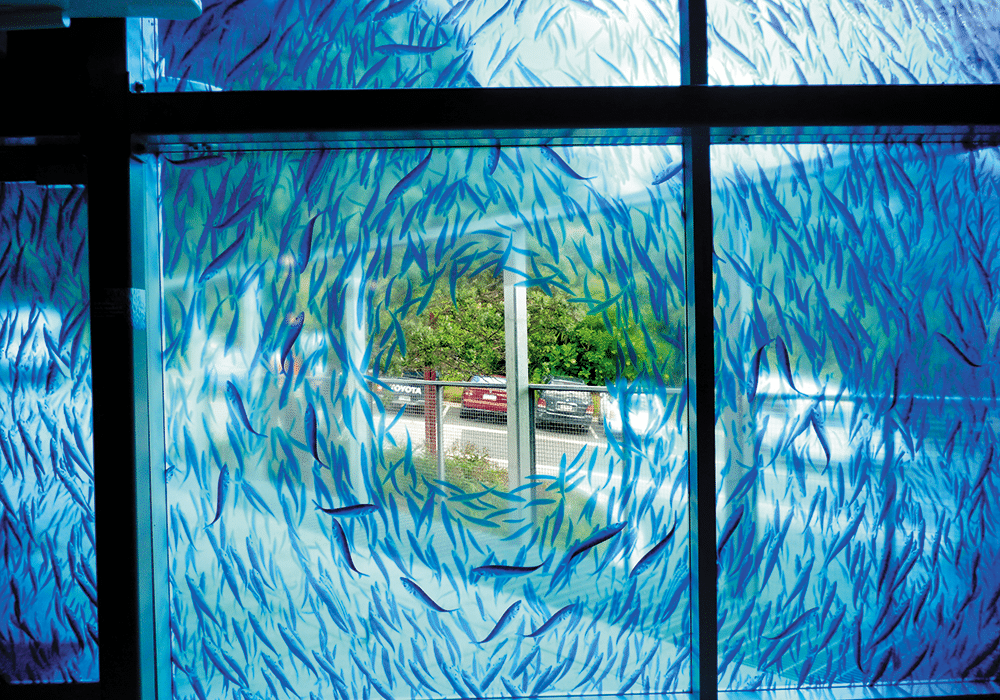
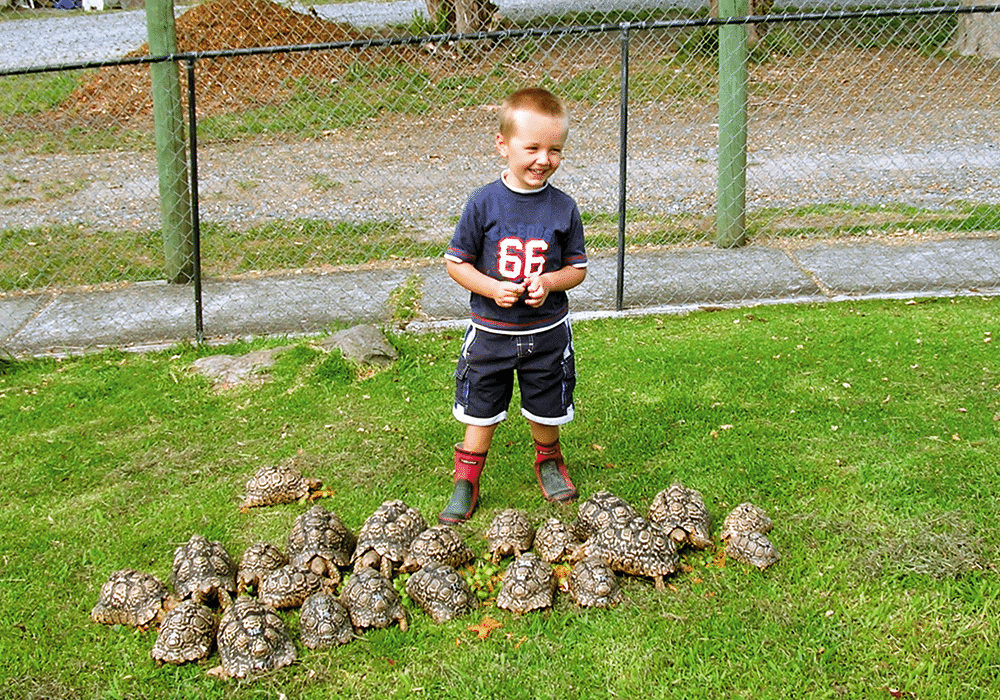
Nearby Campgrounds
- WHANGATEAU HOLIDAY PARK
559 Leigh Rd
On the edge of an estuary. Safe swimming, smart amenities, grassy powered sites.
whangateauholidaypark.co.nz - SANDSPIT HOLIDAY PARK
1334 Sandspit Rd
Powered and non-powered waterside sites. All facilities.
sandspitholidaypark.co.nz - LEIGH CENTRAL MOTORHOME AND CARAVAN PARK
Totara Rd, Leigh
Privately owned, good facilities and powered sites.
leighcentral.co.nz
Looking for motorhomes or caravans for sale? Browse our latest listings here.

